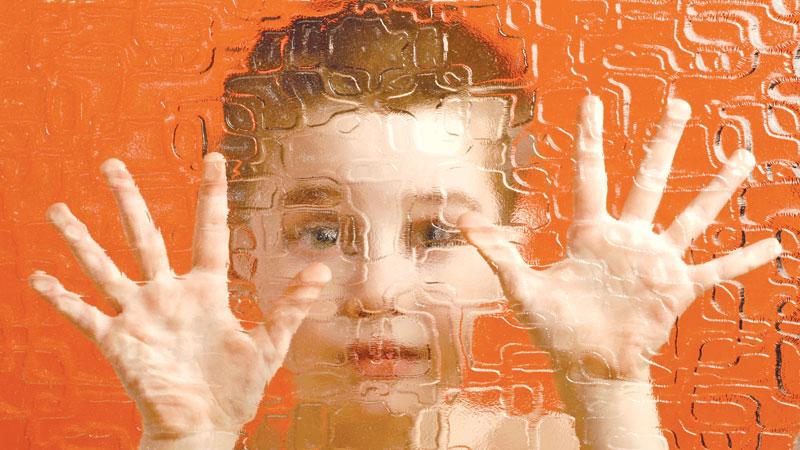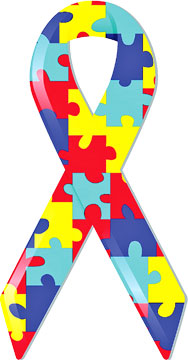
Autism is not an easily understood condition. Most parents with children who have Autism are unaware of the signs which if undetected at an early stage will have lasting impacts on their development. Here honorary Consultant and Senior Lecturer in child and Adolescent Psychiatrist, Dr. Sudarshi Seneviratne explains what signs to look for and how such children can be helped by their caregivers and parents to take that important milestone towards their neurological developments.
 Following are excerpts of an interview with the Sunday Observer.
Following are excerpts of an interview with the Sunday Observer.
What is Autism?
Autism is a neuro developmental disorder meaning a delay in the developmental domains of speech and social interactions. As we all know, developmental milestones mean the time frames when some developmental domain in a child occurs. When the development of the social interaction domain is delayed we call this condition autism or autism spectrum disorder.
The prevalence of this condition has increased over the years and the main causative factor has not been identified. We know that it occurs due to a genetic contribution in combination with other environmental factors, such as, pollutants and pesticides.
What are the common symptoms of autism?
Autism spectrum disorders (ASD) is a spectrum disorder meaning that its symptoms appear in a spectrum from mild to severe. The commonest symptoms parents get concerned about is speech delay or speech abnormalities.
There is a specific time period in a child’s development that we look forward to when a child develops speech. The babbling usually starts as early as 4-5 months and can progress to single words by the age of one year.
A child starts to combine words by two years and is able to combine three words by three years. If there is a delay in the onset of speech it is a concern. We also need to remember that ASD is not the only cause for a speech delay.
The other areas in speech development that a parent needs to pay attention to is when some children lose their gained speech for no reason. We call this phenomenon a speech regression.
Children with ASD can also have a speech of their own. It might be difficult to understand what they are talking but these children tend to mutter words or sometimes phrases not understood by others.
The other speech abnormality we should be concerned about is when children tend to repeat what is spoken to them and not answer in response to the question. This phenomenon is called echolalia. They echo the same statement directed towards them.
The above is a detailed description of the speech abnormality. It is the commonest presentation to clinic with almost over 90% of them referred because of the speech problems.
The other concerning symptoms are the lack of social interactions. These children tend to be more withdrawn and love to be “in their own world”. They do not interact with similar aged children in play.
They have poor eye contact and do not look at the face when spoken to. They do not respond to their names. When they need something they refrain from pointing, they tend to take the person by hand to their desired place and then place the hand on what they need. So all the above features make them very isolated with minimal interactions. The severity of the above symptoms will decide the degree of the ASD.
The other diagnostic symptom is repetitive behaviours. These children can have repetitive behaviours which do not fulfil any significant purpose.
They can be hand flapping, turning round in circles or even jumping up and down in one place.
The child’s interests can be very restricted. This can be seen in their diet where they prefer to eat only some food items. Sometimes they can be colour specific where the preferred colour is white and the child eats only bread, eggs and rice.
Their interest in toys also can be restricted. They can like a specific type of toy and will not be happy to change to another toy.
Some preferred play themes are, Thomas the train, dinosaurs, solar system and planets. Kids usually like these types of toys but kids with ASD will only play with their preferred type of toy.
Hypersensitive
Their restrictions in the type of clothes they dress can also be striking. Some prefer to have their body totally covered while the others refuse to wear.
Another separate symptom constellation is the symptoms in the sensory areas. Some of these children have difficulties with processing sensor stimulation. Some are hypersensitive which means they are not tolerant of sensory inputs and get extremely distressed with them.
On the other hand, some are hypo sensory which means they seek sensations. Let me explain this with an example. If a child has a hypo sensory nature towards his oral sensation, such children will tend to put things frequently into their mouths.
They will lick objects and also eat non edible things. On the other hand, children who have hyper sensory nature towards oral sensations will refuse some kinds of foods. They will like only certain textures of foods. It might be food with a soft texture or crunchy foods.
Identifying these symptoms is very important in the management of these children.
In addition to all the above symptoms, parents sometimes bring their children with concerns of hyperactivity. It is a puzzling symptom as sometimes these children are often misdiagnosed as ADHD (attention deficit hyperactivity disorder).
They can have hyperactivity features and this can be due to the child’s poor engagement with the surrounding or persons.
So they appear ‘hyperactive’. On the other hand, children with ASD can have ADHD as comorbidity which means that the two conditions co-exist.
Given the above reasons it is very important to consider a group of symptoms before a diagnosis is made.
Do the symptoms vary according to age?
Yes. As we know that ASD is a neuro developmental disorder their central nervous system is constantly evolving and maturing. So some of the symptoms seen in early life will evolve and will not be evident again. So, in other words, there will be improvements noticed. If the ASD is at a less severe level the improvement can be marked.
Later in life, the social interactions can stand out. These children will show difficulty in making social relationships. They will have few friends and find it difficult to interact with others. They can also show temper tantrums.
At school going age we also notice their level in education. The IQ level of children with ASD can be variable and there are children who will have difficulties with academic activities.
Also, sometimes children will have a superior level of knowledge in their preferred area but will not be able to comprehend other simpler study contents. These children will tend to work on their own terms in the classroom setting and will not engage with the teacher in the usual classroom activities.
Other conditions we need to rule out
It is always important to arrive at a diagnosis correctly and rule out other possible conditions.
Isolated speech delay
Some children can have a speech delay but will lack the other symptoms of ASD. This can be due to poor early stimulation. These children will engage with parents and others as normal kids and once stimulated will overcome the delay fast.
Children with other developmental delays-
Here children can have delays in other milestones such as, their gross motor or fine motor. This is the age when the child walks, the age where he is able to grasp a spoon and so on. These delays can happen due to many reasons and can be due to birth trauma.
In such children the speech component can also be delayed and the question of a possibility of ASD will arise.
This can be easily ruled out by engaging the children in play. We can see that the children who have other developmental delays can engage with parents and peers unlike a child with ASD.
Selective mutes
In this condition, the child will talk at home but will refrain from talking at other places, mainly the school or pre school. These children will maintain normal eye contact and will have normal non verbal communication skills.
Can we differentiate a child with ASD from the external appearance?
No. Children with ASD do not have characteristic features that can help in a diagnosis. Sometimes we can see that these children can have a larger sized head in their childhood but this is not seen in all children.
Sometimes, ASD can be a part of another illness. This is very common in childhood syndromes where a cluster of symptoms is grouped together as a syndrome.
In such cases if the syndrome has other physical symptoms then the eternal physical symptoms can be identified. e.g: fragile x syndrome
